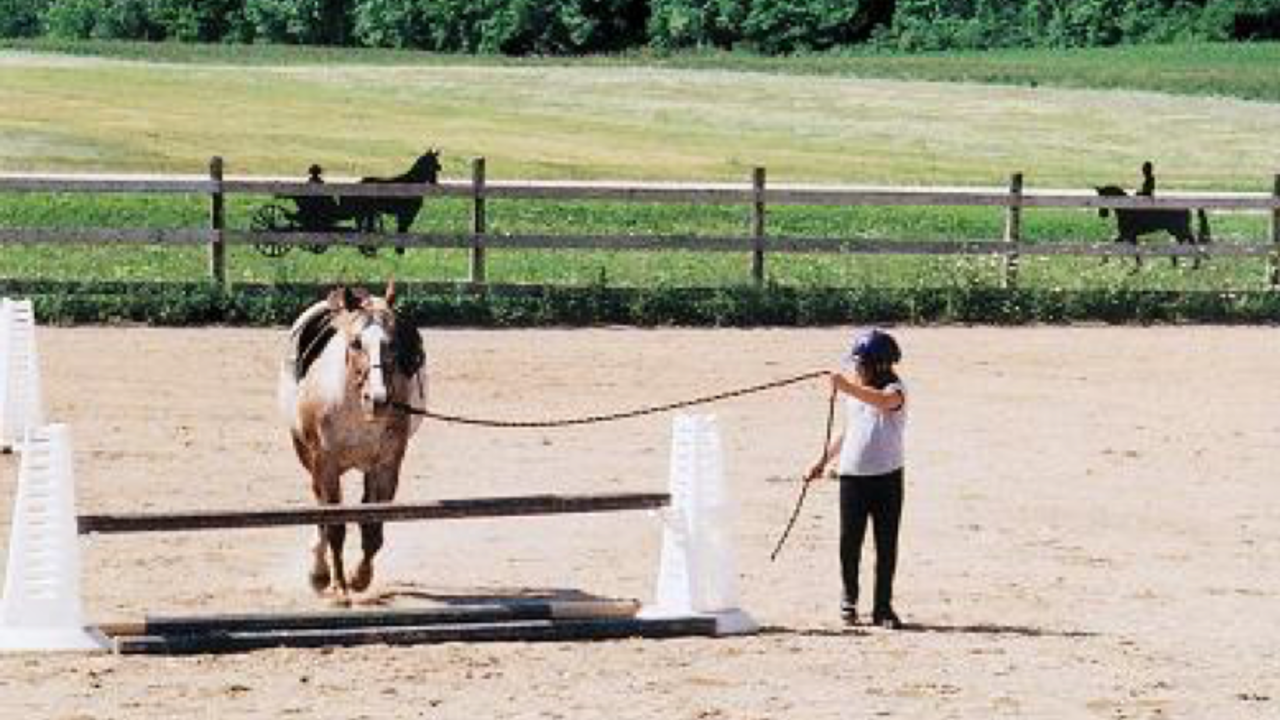Lunging

Sometimes when doing groundwork with our horses, we utilize lunging.
Lunging can be used to help; the horse yield to pressure, develop carrying power and engagement of the hindquarters, condition the horse (mentally and physically), access his self carriage, teach proper bending, and teach him how to follow a feel.
In lunging of the horse, he will learn to understand your intent so you are able to establish direction, speed, and control of his frame at a distance. If lunging is not done correctly and with finesse, the horse can learn numerous bad habits which will show in his work under saddle.
We do not lunge each time we work our horses. Much of the time we do a few simple groundwork exercises instead of lunging.
In winter it is a good idea to lunge before you ride, to give your horse an opportunity to warm and stretch his back muscles.
We also use it in every young horses education, because it is likely they will need to have an understanding of it later in life. It is important to use a long line when lunging your horse. We prefer to use lines of at least 25 feet and will use lines up to 60 feet long or more. Short lines can be used for ground work, but not lunging as you can cause damage to a horses body when he is put to work on a short line.
When we lunge our horses we are always “mixing it up”.
We do numerous transitions from gait to gait and within the paces of the gait. We also vary the size of the circle going from large to small to large again. We are looking for the horse to do all of this smoothly and in his natural tempo and rhythm. He should be calm yet attentive and mentally engaged.
Through the transitions the horse begins to naturally gather and collect himself. He carries himself in a state of readiness, preparing for the next transition.
Oftentimes, we will use natural obstacles such as hills, ditches, logs, and water to help develop the horses carriage and sense of purpose. We may also lunge over jumps, and cavalletti.
We do not have our horse do 10 circles at a walk, 10 at a trot, and then 10 at a canter, switch directions and repeat… This is a recipe for disaster, the horse experiences fatigue when he is kept at one pace for too long, and in order to be more comfortable starts to use his body improperly, or worse yet causes damage to his body. He also learns that his mind can wander and that there is no need to pay attention to the handler.
Don’t lunge your horse to tire him out! Lunge him to build these things in.
Communication, Response, Lightness, Engagement and Carriage.
Please leave your thoughts in the comments below, and go have fun with your horse!
Happy Riding! ~ Paula

